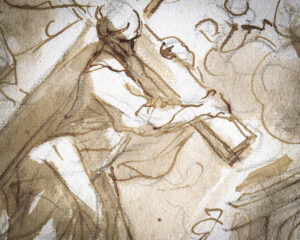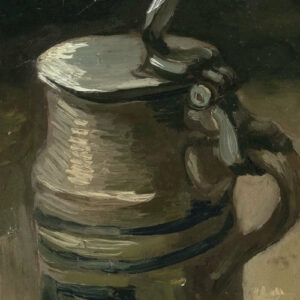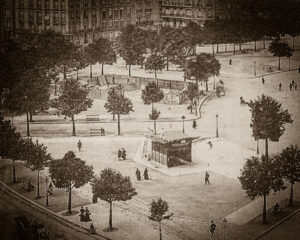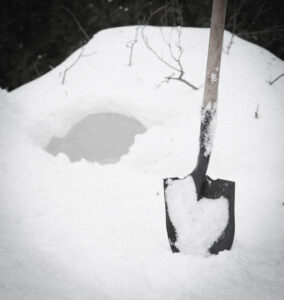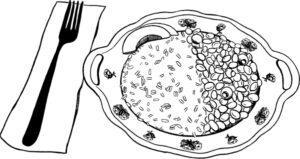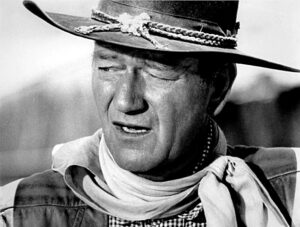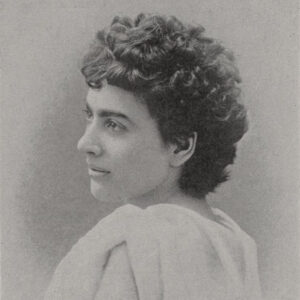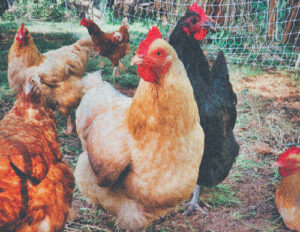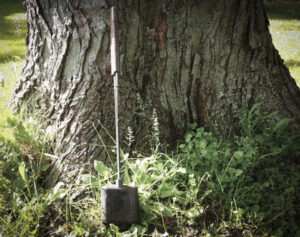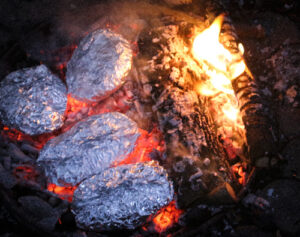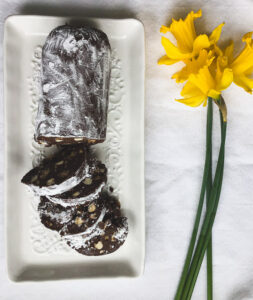Scotch Eggs

Dr. Jeff Gardner
A scotch egg — a hard-boiled egg wrapped in sausage, breaded, and fried — is delicious and portable, with a rich history rooted deep in our collective, out-of-doors past.
Not long ago, people in the West did not speak of the “out-of-doors” as a place to relax and recreate. Part of the reason for this was that most people in the rural West spent all day (and sometimes night) working outside, and the notion of recreating in the space where you lived and worked seemed odd.
But in the 1700s, as Europe industrialized, this began to change. As more people made their living in factories, especially those who lived and worked in crowded and polluted cities such as London or Paris, Europeans began to escape into nature for what they called “strolls” and “picnics,” or what we now call hikes. And as the 1700s became the 1800s, urban Europeans began to rethink the very concept of the out-of-doors. “Outside” was no longer just a place to go; it was an experience, a transformation of the inner self.
The British writer and poet William Wordsworth was so convinced of the formative, instructional powers of the natural world that in 1798 he published his now-famous words:
Books! ’tis a dull and endless strife:
Come, hear the woodland linnet,
How sweet his music! on my life,
There’s more of wisdom in it.
And hark! how blithe the throstle sings!
He, too, is no mean preacher:
Come forth into the light of things,
Let Nature be your teacher.
Enough of books? Let nature be your teacher? When we consider that Wordsworth was every inch the Cambridge Don, these are surprising declarations. Wordsworth and those thinkers, writers, artists, and even explorers who read him believed, too, that going outside was the way into oneself. And when they went into the countryside seeking remarkable, transformative experiences, they took along foods that carried well on these outings and packed delightful flavors.
Enter the scotch egg.
The exact origins of this classic outdoor food are debated. Some claim that the British imported it from India with their tea and spices. A stronger claimant to the origin of the scotch egg is London’s famed Fortnum and Mason (F&M) department store, which has documented production of the dish as far back as 1738. Whether F&M’s claim to scotch egg fame is true, the company knows a thing or two about what to pack when heading outdoors: they outfitted Ernst Shackleton’s 1914 Imperial Trans-Antarctic Expedition and George Mallory’s fatal 1924 attempt to summit Mount Everest.
Happily, we do not need to cross the Antarctic or climb the Himalayas to enjoy this delicious dish. Making scotch eggs at home is straightforward. And yes, you can still take them on a “stroll”; scotch eggs are as delicious in the woods as they are at table.
— Jeff
Scotch Eggs

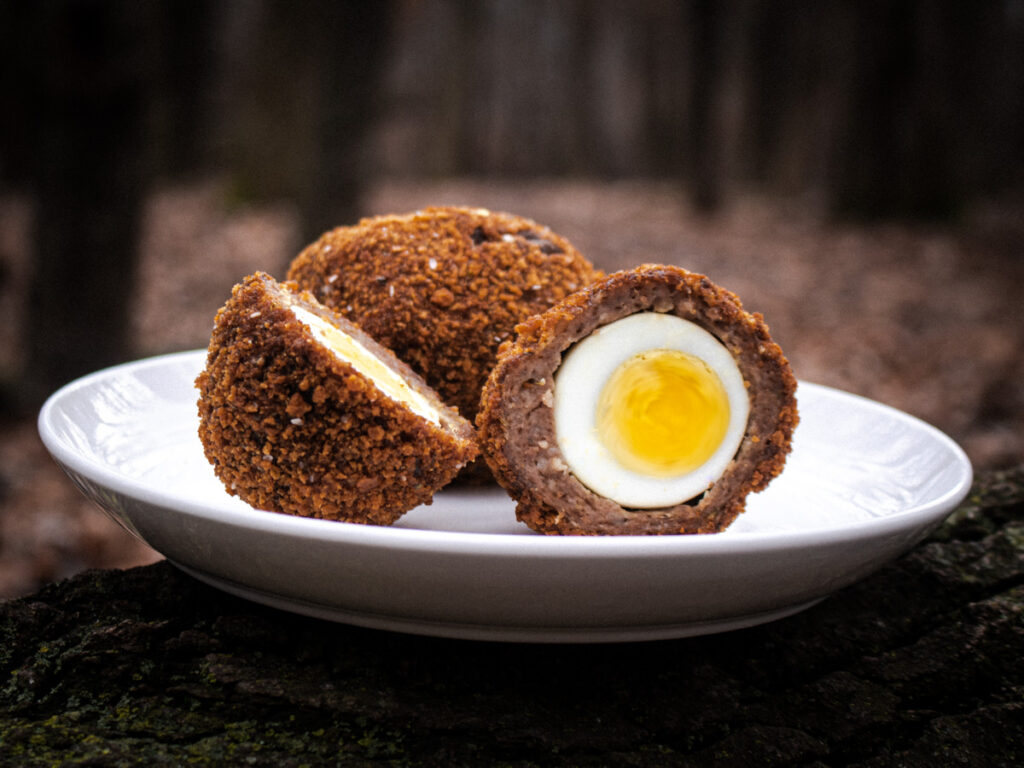
Yield: 4 eggs
Equipment:
Four mixing bowls
Small frying pan
Large saucepan or Dutch oven for deep frying
Cooking thermometer
Tongs
Ingredients:
1-2 lbs of ground, raw sausage, any flavor you like (spicy/mild Italian, morning, or country style)
7 medium or small eggs
Plastic wrap
½ cup flour (regular or GF)
1 cup bread crumbs (regular or GF)
Garlic Powder
Onion Powder
Dried Oregano
Salt
Fresh-ground Pepper
Milk
Oil for frying
Prepare the eggs:
In a large saucepan, boil five eggs on medium-high heat for five minutes or more. While you will only use four eggs in this recipe, it is always a good idea to boil one or two more eggs than needed in case one breaks while boiling.
When the eggs are boiled, run them under cold water until cooled, peel and set aside.
In a mixing bowl, place approximately 1½ pounds of sausage. Fry a small amount (about the size of a quarter) of the sausage in a frying pan and check the flavor. If you like the sausage’s taste, you are set. If not, consider adding small amounts of the above-listed spices (or others such as sage, garlic, nutmeg, dijon mustard) to “push” the flavor around any way you like. Be sure to fry and taste a tiny amount of sausage after adding any flavors or spices.
Tear a piece of plastic wrap, roughly as long as it is wide, and place it on your work surface. Take some of the sausage, an amount when rolled into a ball slightly larger than one of the eggs, and put it off-center on the plastic wrap. Fold the plastic wrap over the sausage and press the sausage into a disk shape, about ⅛ of an inch thick.
Pull back the plastic wrap and place one cooled, peeled egg in the center of the sausage. Put your hands underneath the sausage and egg, pick up the whole thing and gently wrap the sausage around the egg. Dipping your fingers in some cold water will make it easier to wrap the sausage around the egg, making sure that it is roughly the same thickness all the way around. Once the egg is wrapped in the sausage, set aside and do the other three.
Bread & fry:
To bread the scotch eggs, set up three bowls, one with flour, one with the bread crumbs, and one with the two remaining raw eggs, beaten smooth with just a splash of milk. Add a teaspoon each of the garlic powder, onion powder, oregano, salt, and pepper to the bread crumbs (to taste) and mix.
Take one of the sausage-wrapped eggs and roll it in the flour until completely coated. Then, gently shake off any excess flour and roll the flour-coated scotch egg in the egg mixture. Then, roll the wet scotch egg in the bread crumbs, covering the whole sausage egg entirely and evenly. Helpful hint: Use one hand for the dry ingredients and the other for the beaten eggs to make the breading process less messy. After coating all of the eggs, set them aside in the refrigerator.
Take your saucepan or dutch oven and make sure that it is completely dry. Fill it with about three inches of oil, or enough to cover ¾ of the coated scotch egg when fried. Heat the oil until it reaches a temperature of 350° -370° F, and then carefully place one of the breaded scotch eggs in the hot oil. Aim to stabilize the oil’s temperature around 335° – 345° F. If your pot is large enough and you can keep the oil between 335° – 345° F, you can fry more than one egg at a time. Be careful not to let the oil rise above 350° F while frying the egg; this could burn the breading before the sausage is fully cooked.
Let the egg(s) fry in the hot oil for a minute or two, and then roll it over so that the top side is now submerged in the hot oil. Once both sides are fried, gently roll the egg around in the oil until it is evenly golden brown on all sides.
This should take about five to six minutes, but the total time may vary. Make sure the sausage is cooked through.
Using your tongs, carefully remove the completed scotch egg from the frying oil and place it on a plate with two or three paper towels to soak up any excess oil. Return the oil to 350° F and, one by one, fry all of the scotch eggs.
Enjoy:
On a picnic, stroll, and/or hike:
To get scotch eggs out-of-doors ready, simply place them in the refrigerator overnight. Once chilled, scotch eggs will keep for several hours without refrigeration.
To take them outside, wrap them gently in a paper towel and place them in any hard-sided container (think Tupperware) to keep them from getting crushed. Eaten as is, a scotch egg is excellent. If you remember to take along a packet of mustard or mayo, so much the better.
At the table:
Scotch eggs served with a dark green salad and french fries make an excellent meal all on their own. We love scotch eggs with a simple sauce of mayonnaise, and Dijon mustard, mixed roughly half and half, or to taste.
And, whether indoors or out, the dish always pairs well with a dramatic reading of William Wordsworth.

The Tables Turned
by William Wordsworth
Up! up! my Friend, and quit your books;
Or surely you’ll grow double:
Up! up! my Friend, and clear your looks;
Why all this toil and trouble
The sun above the mountain’s head,
A freshening lustre mellow
Through all the long green fields has spread,
His first sweet evening yellow.
Books! ’tis a dull and endless strife:
Come, hear the woodland linnet,
How sweet his music! on my life,
There’s more of wisdom in it.
And hark! how blithe the throstle sings!
He, too, is no mean preacher:
Come forth into the light of things,
Let Nature be your teacher.
She has a world of ready wealth,
Our minds and hearts to bless—
Spontaneous wisdom breathed by health,
Truth breathed by cheerfulness.
One impulse from a vernal wood
May teach you more of man,
Of moral evil and of good,
Than all the sages can.
Sweet is the lore which Nature brings;
Our meddling intellect
Mis-shapes the beauteous forms of things:—
We murder to dissect.
Enough of Science and of Art;
Close up those barren leaves;
Come forth, and bring with you a heart
That watches and receives.




